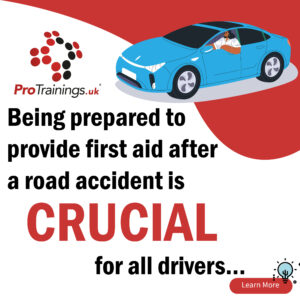First Aid for Drivers: What to Do After a Road Accident
Road accidents can be a terrifying experience, and knowing how to respond in those critical moments can make all the difference. As a driver in the UK, being prepared with basic first aid knowledge can help you manage the situation effectively and potentially save lives. This guide provides essential first aid steps for drivers to take immediately after a road accident.
1. Ensure Safety First
Your safety and the safety of others are the top priorities after an accident:
- Step 1: If possible, move your vehicle to a safe location away from traffic to avoid further collisions.
- Step 2: Turn on your hazard lights to alert other drivers.
- Step 3: If you have a warning triangle, place it a safe distance behind your vehicle to warn oncoming traffic.
2. Check for Injuries
Before administering first aid, assess the situation to understand the extent of the injuries:
- Step 1: Check yourself and any passengers for injuries.
- Step 2: If it’s safe, check on the occupants of other vehicles involved in the accident.
- Step 3: Call 999 immediately if there are any serious injuries or if someone is unresponsive.
3. Provide Basic First Aid
If you encounter injuries, here are the steps to provide immediate first aid:
- Bleeding: Apply direct pressure to any wounds with a clean cloth to stop bleeding. If the bleeding is severe, continue applying pressure and call for emergency help.
- Unconsciousness: If someone is unconscious but breathing, place them in the recovery position. This helps keep their airway open and prevents choking.
- CPR: If someone is unresponsive and not breathing, start CPR immediately. Place the heel of your hand on the centre of their chest, interlock your fingers, and press down firmly at a rate of 100-120 compressions per minute.
- Burns: If someone has suffered burns, cool the affected area with cold water for at least 20 minutes. Do not apply creams or ice.
4. Dealing with Shock
Shock is a common reaction after a road accident, especially if there are serious injuries:
- Step 1: Keep the injured person calm and reassure them.
- Step 2: Encourage them to lie down and elevate their legs if possible.
- Step 3: Keep them warm with a blanket or coat.
- Step 4: Monitor their condition closely and be prepared to give further first aid if they deteriorate.
5. Do Not Move Seriously Injured People
Unless there is an immediate danger (such as fire or an explosion risk), do not attempt to move someone who is seriously injured:
- Step 1: Moving someone with a potential spinal injury could cause further harm.
- Step 2: Keep the injured person still and comfortable until emergency services arrive.
6. Stay Calm and Wait for Emergency Services
Once you have provided first aid, stay with the injured parties and wait for emergency services:
- Step 1: Provide the emergency responders with as much information as possible about the accident and the injuries.
- Step 2: Follow any instructions given by the emergency operator or responders.
Conclusion
Being prepared to provide first aid after a road accident is crucial for all drivers. By knowing how to react and administer basic first aid, you can help prevent further injuries and potentially save lives. Make sure to carry a well-stocked first aid kit in your vehicle and consider taking a first aid course to boost your confidence and skills in handling emergencies on the road.
